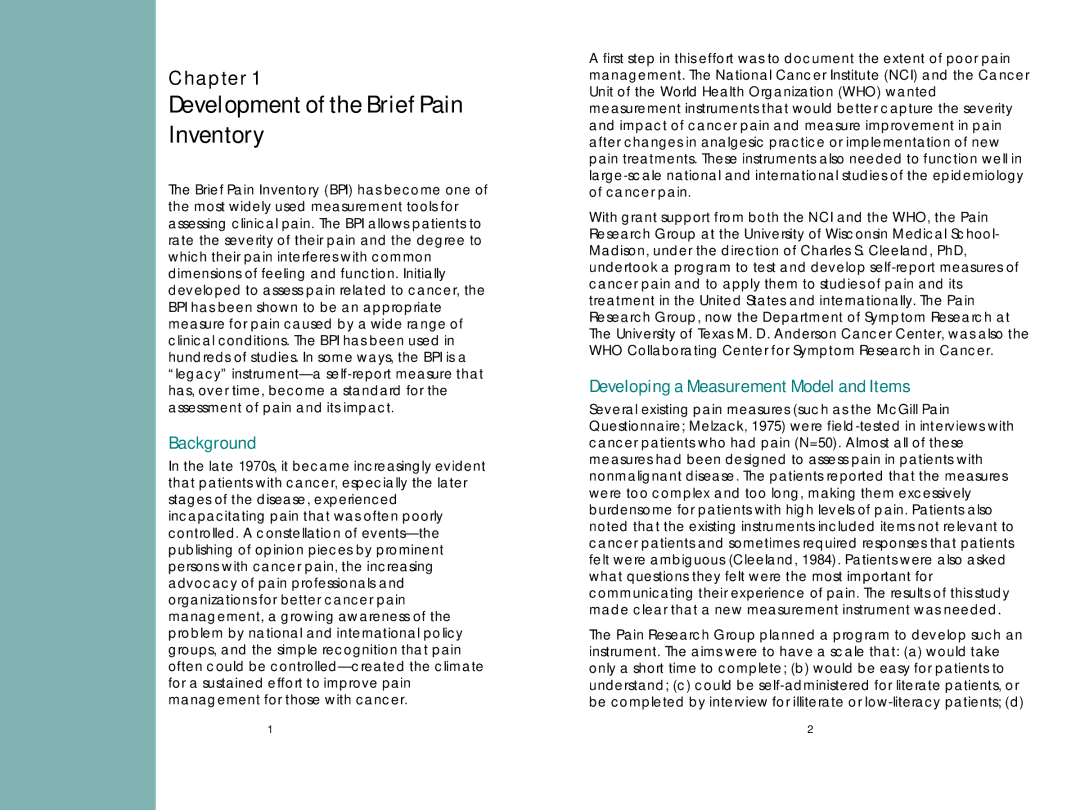
Chapter 1
Development of the Brief Pain Inventory
The Brief Pain Inventory (BPI) has become one of the most widely used measurement tools for assessing clinical pain. The BPI allows patients to rate the severity of their pain and the degree to which their pain interferes with common dimensions of feeling and function. Initially developed to assess pain related to cancer, the BPI has been shown to be an appropriate measure for pain caused by a wide range of clinical conditions. The BPI has been used in hundreds of studies. In some ways, the BPI is a “legacy” instrument— a
Background
In the late 1970s, it became increasingly evident that patients with cancer, especially the later stages of the disease, experienced incapacitating pain that was often poorly controlled. A constellation of events— the publishing of opinion pieces by prominent persons with cancer pain, the increasing advocacy of pain professionals and organizations for better cancer pain management, a growing awareness of the problem by national and international policy groups, and the simple recognition that pain often could be controlled— created the climate for a sustained effort to improve pain management for those with cancer.
A first step in this effort was to document the extent of poor pain management. The National Cancer Institute (NCI) and the Cancer Unit of the World Health Organization (WHO) wanted measurement instruments that would better capture the severity and impact of cancer pain and measure improvement in pain after changes in analgesic practice or implementation of new pain treatments. These instruments also needed to function well in
With grant support from both the NCI and the WHO, the Pain Research Group at the University of Wisconsin Medical School- Madison, under the direction of Charles S. Cleeland, PhD, undertook a program to test and develop
Developing a Measurement Model and Items
Several existing pain measures (such as the McGill Pain Questionnaire; Melzack, 1975) were
The Pain Research Group planned a program to develop such an instrument. The aims were to have a scale that: (a) would take only a short time to complete; (b) would be easy for patients to understand; (c) could be
1 | 2 |
